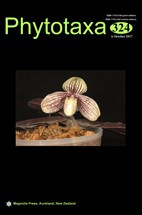Abstract
Andrzejowski described in 1862 three species of Chenopodium from Ukraine. The standing lectotype (LE) of C. acerifolium was designated by Sukhorukov in 2014; it is represented by a single plant with a few cauline leaves, but without fruits. As a consequence, it is not properly diagnostic of and representative for the species according to its current concept in Chenopodium. An epitype is proposed here (Art. 9.8 of ICN), which is a specimen from the Besser collection at KW annotated by Andrzejowski, with a handwritten original description on the label. The first effective lectotypification of C. acerifolium has been done by Dvořák in 1987, based on a specimen from KW at that time sent on loan to BRNU. Unfortunately, this specimen is probably lost (not traced in KW and BRNU) but, if found, should be considered the non-supersedable lectotype. Lectotypes are designated also for C. betaceum and C. divaricatum. The name C. betaceum should be applied to most of European and western Asian plants currently called C. strictum sensu auct. The true C. strictum Roth belongs to a group of insufficiently known taxa from India and adjacent areas, and is not closely related to C. betaceum. The identity of C. divaricatum remains obscure. This name is definitely not a synonym of C. ficifolium (as it was suggested by Iljin) but might be an earlier name for C. suecicum.

